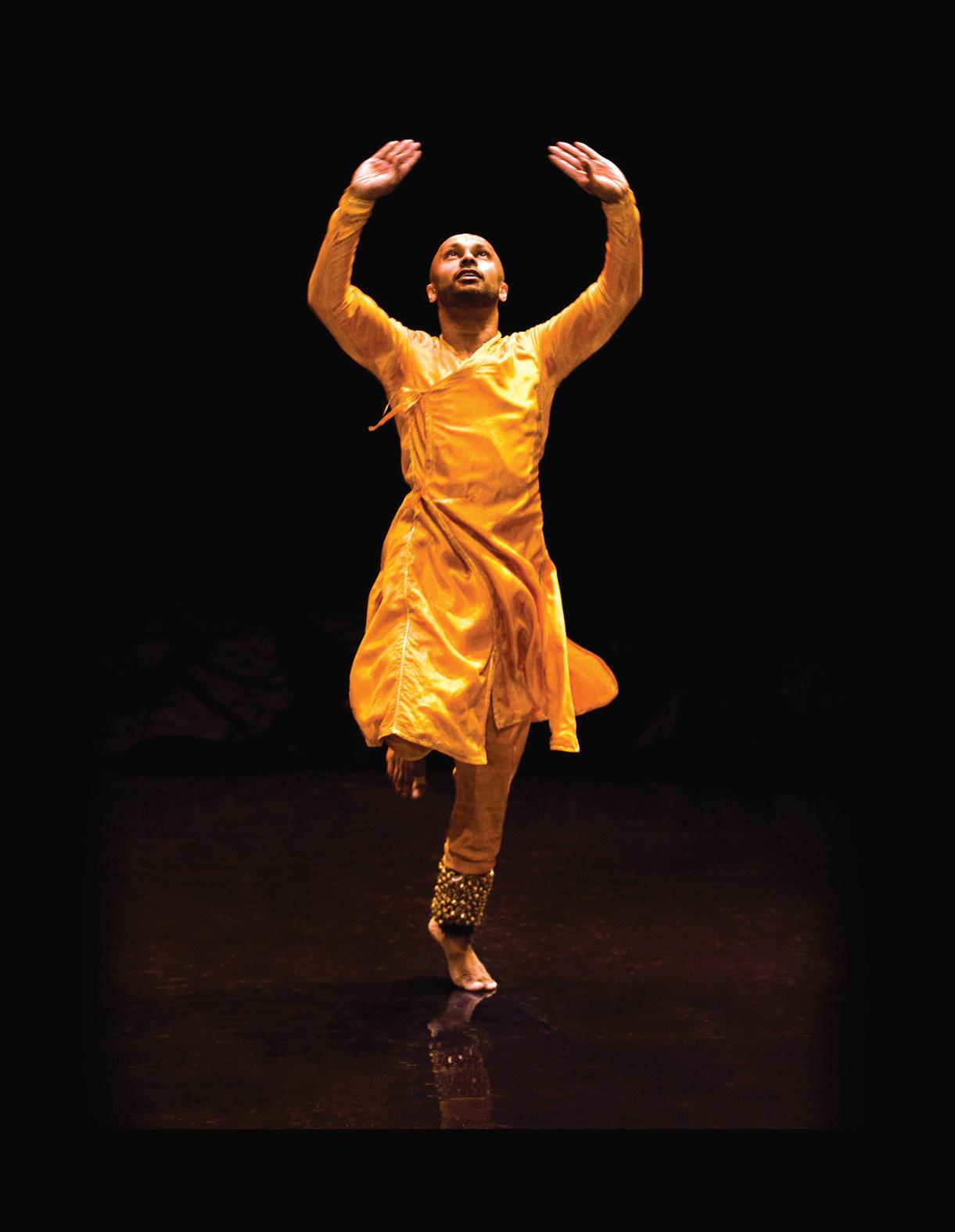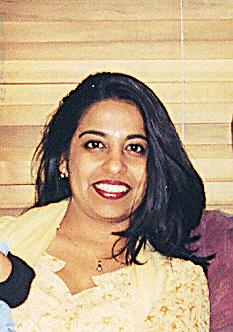
5 minute read
The Art of Akram
from 2010-10 Melbourne
by Indian Link
For this unusually talented dancer and choreographer, the piece of work should be more memorable than the artiste
BY PREETI JABBAL

The internationally acclaimed Akram Khan Company will be making its long awaited Melbourne debut with the World Premiere Season of Vertical Road at The CUB Malthouse, Merlyn Theatre from October 19 to 23. Celebrated dancer and choreographer Akram Khan will perform as part of the 25th Melbourne International Arts Festival.
Akram Khan is known for bringing vitality and innovation to cross-cultural, crossdisciplinary expression. His latest creation Vertical Road draws inspiration from universal myths of angels that symbolise ‘ascension’: the road between the earthly and the spiritual, the ‘vertical road’. Influenced by various visual works, from video artist Bill Viola to installation artists Kader Attia and William Forsythe, the thematic concept involves Middle Eastern folklore and philosophy and investigates the notion of the Arabic word ‘zenith’ or ‘vertical line’, the highest point reached by a celestial body.
Akram Khan is a master of Kathak, the classical Indian dance form and an awardwinning choreographer of contemporary dance. His work breaks the boundaries between the traditional and the innovative, east and west. Khan has assembled a cast of extraordinarily talented performers from across Asia, Europe and the Middle East and has worked with long-term collaborator composer, Nitin Sawhney, who has created a specially commissioned score for this thoughtprovoking piece. Balancing carefully crafted structure and innovative lighting, Vertical Road has a richly diverse quality, played out through each performer’s different cultural interpretation of the human odyssey.
Born in London in 1974 to Bangladeshi parents, Khan began dancing at age 7. He studied with the great Kathak dancer Sri Pratap Pawar, and began presenting solo performances of his work in the 1990s, finally launching the Akram Khan Company in 2000. The recipient of numerous awards, Khan has received an
Outstanding Artist Critics’ Circle National Dance Award and MBE (Member of the British Empire) for services to dance in 2005. Currently Associate Artist at Sadler’s Wells, Khan’s works include the recently internationally toured In-I (2009), collaborating with Oscar-winning actress Juliette Binoche and London based sculptor Anish Kapoor.
Preeti Jabbal spoke to Akram Khan prior to his arrival in Melbourne, to find out more about his life and work.
PJ: Tell us about Vertical Road and what is the linking narrative behind this piece?
AK: Vertical Road is my first work that does not have a narrative in the literal sense, it is more visual. Ruth Little my dramaturge, and many colleagues of mine spent a lot of time with me, talking about the concept of verticality. We realized most human experiences are horizontal in nature. With the world moving so fast, with the growth of technology and information, I am somehow
PJ: What are you looking forward to with this latest creation, Vertical Road?
AK: For me, Vertical Road has an element of spiritual experience rather than a performance. It is very intense, almost dark. I would like to see that this piece has the possibility of being shared with my audience as an experience that is spiritual, almost Zen-like.
PJ: How much and what kind of research went into this creation?
AK: It took us about a year of research for this project. We looked a lot at the Arab world. We looked at paintings and poetry from different parts of the world. I really liked the work of Persian Muslim poet, Rumi. VR is influenced by a combination of all these art forms and thoughts.
About the Festival
information and it stores it somewhere within. The body is like a memory bank that has its own way of mutating. I call it ‘con’fusion where the body is trying to make sense of things. I use my body as a filter or process, when I see material from other dancers my body just takes it in. So my art has evolved mainly through my body and its capacity to adopt.
PJ: As your work is innovative and experimental, with a mix of different genres in your choreography, does this displease purists?
AK: No, I don’t think there is anything pure anymore. Everything is borrowed from something; for example Kathak is not from the temples, it has come from different gharanas from the streets and similarly other dance forms borrow from everything and each other. How can anybody claim they are pure? My intention in mixing genres is not to offend anyone so I do not worry about the ‘so called purists’. Interestingly, I have copped flak from India particularly in that respect. I remember performing in the classical hub Chennai/ Madras. A huge debate ensued after my performance where artists argued with each other over my work, it was fascinating.
The 25th Melbourne International Arts Festival, under the artistic direction of Brett Sheehy, will run over 16 days, from 8 to 23 October. The Festival will present a feast of music, dance, theatre, opera, visual arts, multimedia and outdoor events from renowned and upcoming Australian and international companies and artists. This year’s Festival will feature 13 world and 14 Australian premiere works with projects varying widely in scale and content. Of the 909 artists presenting their work in the 2010 festival, 658 are Australian and 251 from overseas.
Festival highlights this year include free outdoor aerial spectacular K@osmos; Hotel Pro Forma’s awe inspiring, large-scale operatic spectacle; Tomorrow, in a year, featuring the groundbreaking music of electro-pop masters The Knife; world renowned recording artists Sinead O’Connor, John Cale and Meshell Ndegeocello; one of Australia’s most highly regarded performers in his one-man show Jack Charles V The Crown; the residency of British composer, Thomas Adès, the most inventive contemporary composer of his generation; and Beck’s Festival Bar at the Forum Theatre.
PJ: Average viewers may find it difficult to understand and pick up the technical aspect of your dances. Do you care that your audience remains connected and interested?
AK: Yes I do care. If I stay connected with my work, I have a feeling that my audience will also remain connected. Sometimes I detach myself and look at my work, and that can help to some extent. I also seek guidance from my mother, my wife and my producer Farooq Chaudhry. They look at my work with fresh eyes and give me advice.
PJ: As your work is immensely physical, do you follow a special diet or engage in any special exercise regime?
AK: I would be lying if I said that I stick to any diet, because I don’t. However, I do Kathak everyday with my ghungroos. It is very rigorous and it keeps me fit.
PJ: What do you do to relax?
AK: I just think about relaxing. Relaxation has eluded me for 9 years.
PJ: Any unfulfilled ambitions?
AK: I always wanted to work with Satyajit Ray and experience his art, but that’s not possible now. I would also like to be involved with art films, specially the Australian films. I like them. Next year I am doing a full length solo on Bangladesh called ‘Desh’; that is something I have always meant to do and I am finally going ahead.
PJ: Do you think there are far too many dance shows on TV nowadays?
AK: I think that it is wonderful that dance has come to the forefront. I also feel that art is mutating, the morals behind the art are mutating too; however with many dance shows on TV it is more about name, not about depth. People are seeking instant gratification and it is soulless and momentary.
PJ: According to you are great dancers born or made?
AK: I don’t know, I would tell you if I was one myself! I am not naturally gifted like my sister, she was very talented. I just work very hard. My talent lies more in being a fighter and never giving up. But to answer your question I think dancers can be made, but very few of them can be called artists.
PJ: How do you want Australia to remember you?
AK: I hope they don’t remember me, I hope they remember an experience on stage. Unfortunately with a lot of performances people see more of the artist in the work than see the work itself. For me, the best performance is when you see a work and you are really moved, but you don’t know who has done it.
PJ: Do you have a message for dance lovers and aspiring dancers?
AK: I am very excited to come to Melbourne and share my art with people in the city. My work should do all the speaking.








